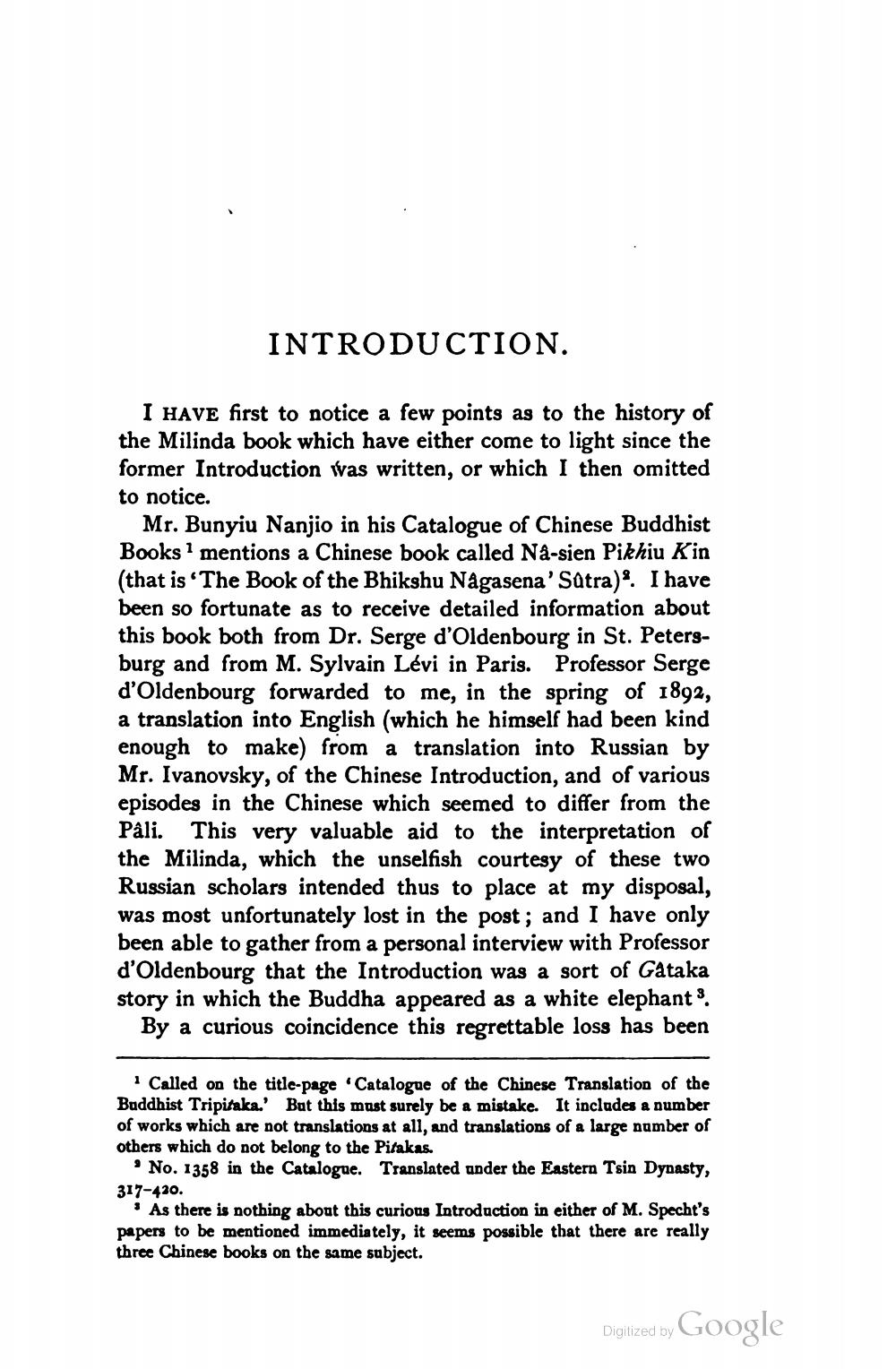________________
INTRODUCTION.
I HAVE first to notice a few points as to the history of the Milinda book which have either come to light since the former Introduction was written, or which I then omitted to notice.
Mr. Bunyiu Nanjio in his Catalogue of Chinese Buddhist Books1 mentions a Chinese book called Nâ-sien Pikhiu Kin (that is 'The Book of the Bhikshu Nâgasena' Sûtra). I have been so fortunate as to receive detailed information about this book both from Dr. Serge d'Oldenbourg in St. Petersburg and from M. Sylvain Lévi in Paris. Professor Serge d'Oldenbourg forwarded to me, in the spring of 1892, a translation into English (which he himself had been kind enough to make) from a translation into Russian by Mr. Ivanovsky, of the Chinese Introduction, and of various episodes in the Chinese which seemed to differ from the Pâli. This very valuable aid to the interpretation of the Milinda, which the unselfish courtesy of these two Russian scholars intended thus to place at my disposal, was most unfortunately lost in the post; and I have only been able to gather from a personal interview with Professor d'Oldenbourg that the Introduction was a sort of Gåtaka story in which the Buddha appeared as a white elephant3. By a curious coincidence this regrettable loss has been
Called on the title-page 'Catalogue of the Chinese Translation of the Buddhist Tripitaka.' But this must surely be a mistake. It includes a number of works which are not translations at all, and translations of a large number of others which do not belong to the Pitakas.
No. 1358 in the Catalogue. Translated under the Eastern Tsin Dynasty, 317-420.
As there is nothing about this curious Introduction in either of M. Specht's papers to be mentioned immediately, it seems possible that there are really three Chinese books on the same subject.
Digitized by
Google




